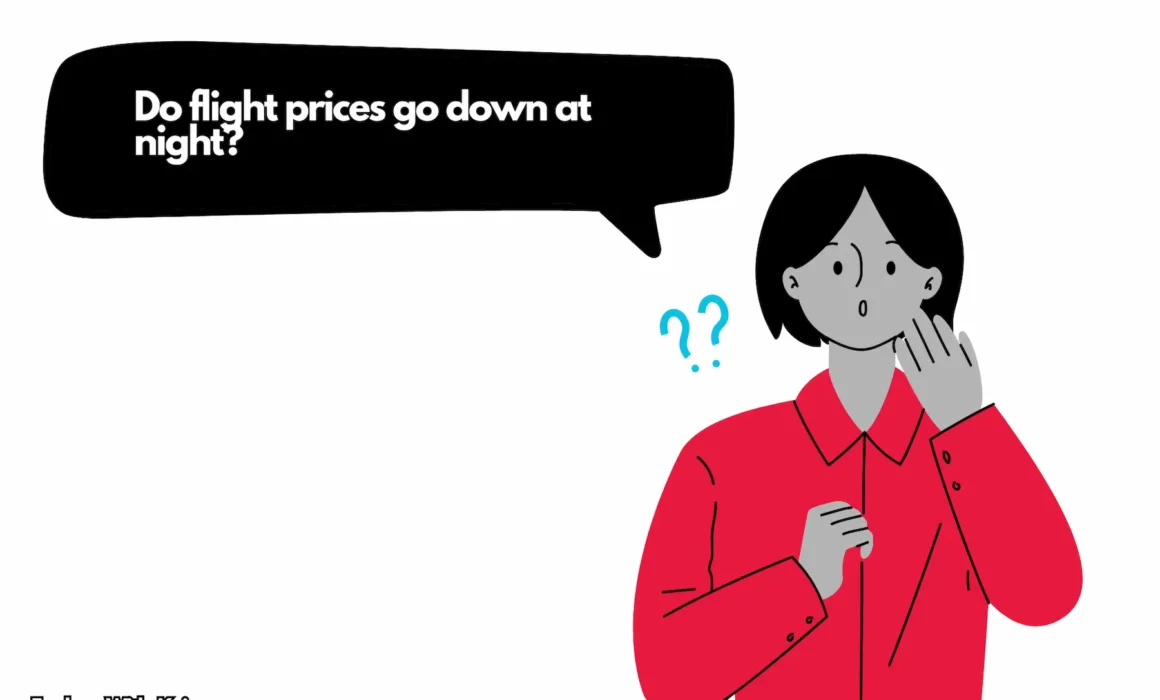Do Flight Prices go down at Night?
As someone who’s constantly hopping between countries for work and filming, I’ve spent more time than I’d like to admit refreshing flight search pages at odd hours. Sometimes it’s early morning, other times way past midnight. I do all these all in the hope of catching that magical price drop everyone talks about. But here’s the truth I’ve learned after years of booking flights across continents that flight prices don’t consistently go down at night. But that said, there are still certain patterns that can make it seem like they do.
Airline Pricing Isn’t Time-Based
Over the years, I’ve learned that flight prices have everything to do with data and demand. Airlines don’t manually adjust fares like people used to in travel agencies. Instead, they use complex systems known as dynamic pricing algorithms, which are basically robots that never sleep.
These systems constantly scan how many seats are left, how close the flight date is, what competitors are charging, and even where you are searching from. For example, if a few hundred people suddenly start looking at flights from Tokyo to Singapore, the algorithm immediately takes notice. Within minutes, prices can rise simply because interest increased.
That is why you might see one price in the morning, another at lunch, and a completely different one before bed. It is not the time of day that changes the fare. It is how the system reacts to movement and demand. Airlines are playing a real-time game of supply and demand, adjusting faster than most travelers can refresh their browser.
Why It Seems Like Prices Drop at Night
Now here is where the confusion starts. Many travelers swear they find cheaper flights late at night, and sometimes they are right. But it is not because airlines become generous after 11 p.m. It is usually because fewer people are online searching at that hour.
When there is less traffic, the algorithms calm down. Prices that might have jumped earlier in the day due to heavy search activity can quietly reset when things slow down. That is why you may stumble across a lower fare after midnight or early in the morning. The system is simply resting after the rush.
However, this effect is short-lived and unpredictable. By sunrise, as soon as demand picks up again, those same prices can climb back up. So while you might get lucky browsing at night, it is not a guaranteed trick. Think of it more as catching a quiet moment in a constantly moving market rather than discovering a secret nighttime discount.
What Actually Affects the Price More
The real secret to lower airfares has nothing to do with staying up late. It is about when and how you book. Airlines care far more about patterns in demand than about what time it is where you are.
Data from Skyscanner, Google Flights, and Hopper all show the same trend. Flights are generally cheapest when you book during a low-demand period, not when you search at night. For example, midweek bookings often show the best prices because most travelers start planning on weekends.
Here are a few timing patterns that actually matter:
- Best days to book: Tuesday and Wednesday often show the lowest average fares.
- Best days to fly: Tuesday, Wednesday, and Saturday usually come out cheaper because they are less popular travel days.
- Best booking window: Around six to eight weeks before a domestic flight and two to four months before an international one gives you a good balance between choice and price.
Booking too early or too close to your departure date can push prices up again. The sweet spot usually lies in the middle. This is the time when airlines are still trying to fill seats. If you focus on the bigger timing picture instead of the time on your clock, you will save far more in the long run. It is all about your flexibility and timing rather than luck.
Smart Traveler Tips

Boarding my Africa World Airlines flight at Kotoka International Airport in Accra. Take note of the fact that travel lessons apply everywhere, even when flying close to home.
Over time, I’ve learned that finding a good deal on flights is less about guessing when prices will drop and more about using the right tools and strategies. You don’t have to lose sleep checking your laptop at midnight. Instead, let technology do the work for you.
Start by setting up price alerts on platforms like Google Flights or Skyscanner. These tools monitor fare changes and send you a notification when prices rise or fall. It is honestly one of the easiest ways to keep track without constantly checking.
If you can, always search in incognito or private mode. This prevents websites from saving your search history and showing slightly higher prices the next time you look for the same route. It doesn’t happen every time, but it is an easy precaution to take.
Also, I often find apps like Hopper and Kayak very useful since they can help by predicting when fares are likely to increase or decrease. They are able to do this because they actually use data from thousands of flights to make smart recommendations about whether to buy now or wait.
Another small but powerful trick is to be flexible with your travel dates and airports. Believe it or not but shifting your departure or return by just one day can sometimes save you a surprising amount of money. The same applies to flying out of a nearby airport if it offers a better deal.
At the end of the day, smart travelers don’t rely on luck. They rely on flexibility and information. Once you have those working for you, you’ll find that saving on flights becomes almost effortless.






